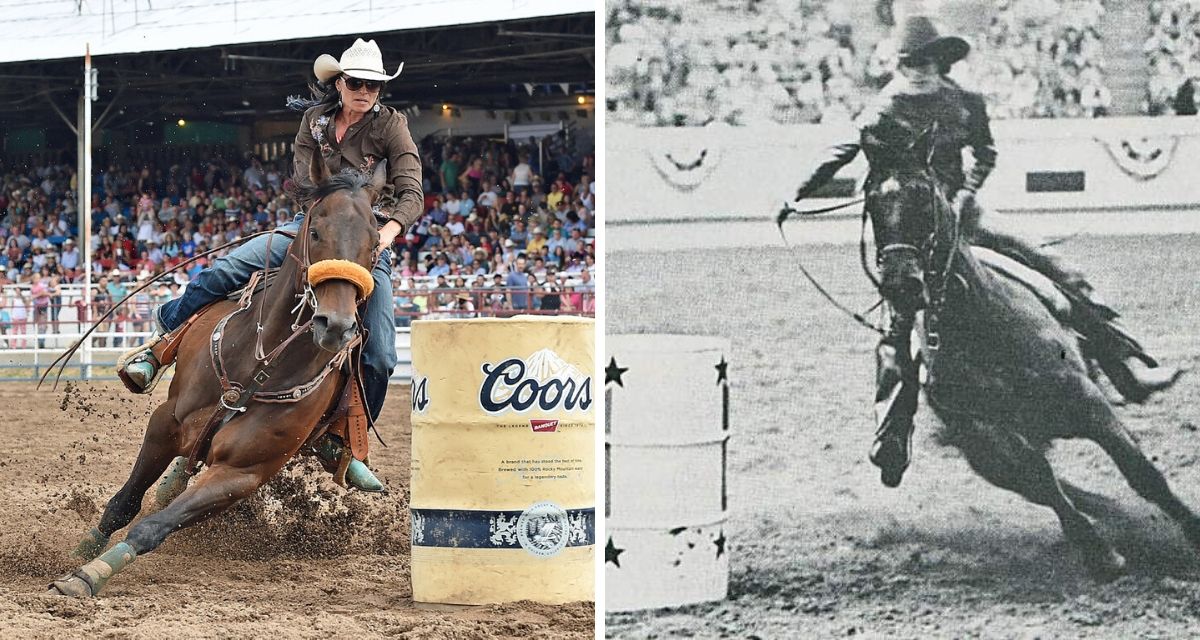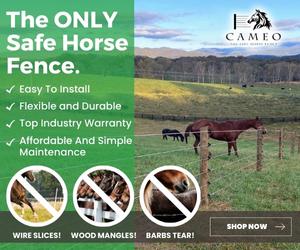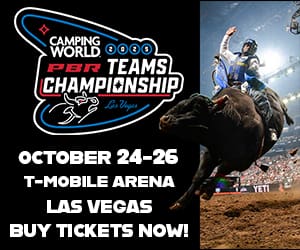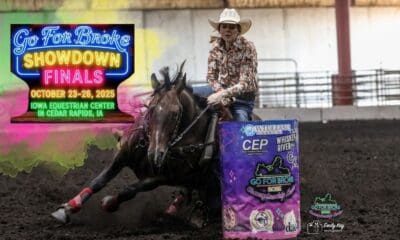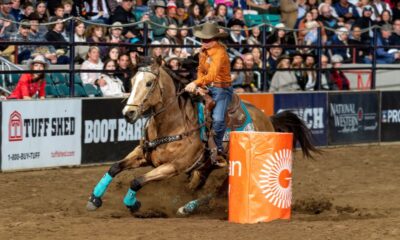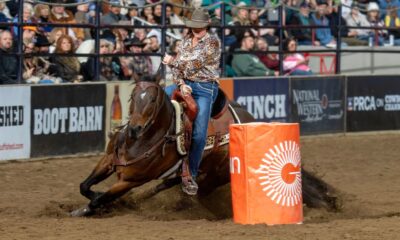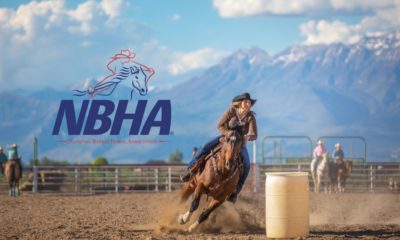Barrel racing has a vague beginning. There isn’t a single story or individual that can indefinitely say where the idea of barrel racing came from. Although, there is a pretty idea of how it evolved once it started getting competitive. Barrel racing started growing as a sport in Texas in the early 1900s. It wasn’t until the 1940s that barrel racing was judged based on the shortest time and not on the appearance of the girl and her horse. This is also the first year that women were offered prize money instead of gifts. As barrel racing continues to grow in numbers of participation size, it also continues to grow in the hearts of rodeo fans who want to cheer on these cowgirls.
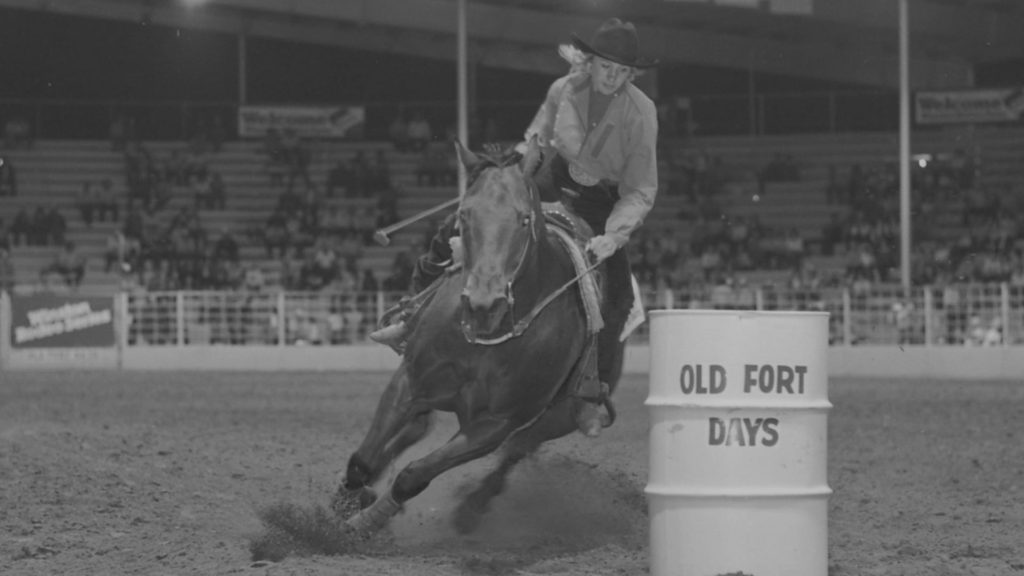
Credit to the National Cowboy Museum
A turning point for the sport was when the Girl’s Rodeo Association was formed back in 1948. This single moment in history put barrel racing on the map for good and laid the foundation for it to be accepted into the PRCA decades later. Back in the day, there wasn’t just the standard cloverleaf pattern we see today, there also used to be a figure-eight pattern as well. The figure-eight was dropped at some point for the more difficult cloverleaf pattern and that’s the way that it has stayed. According to the WPRA’s website, here is the standard size for a competition cloverleaf pattern,
There must be ninety (90) feet between barrel one (1) and two (2); one hundred five (105) feet between barrel one (1) and three (3) and between barrel two (2) and three (3); sixty (60) feet from barrels one (1) and two (2) to the score line. Score line should be at least sixty (60) feet from end of arena, if arena allows, and not less than sixty (60) feet. – WPRA Rule book
Modern-day barrel racing is one of the most expensive rodeo events. Being a timed event, participants must complete it in the shortest time possible. There are penalties for knocking down a barrel and even the chance of a no-time if your horse breaks the pattern. In order to accomplish this, you need to have a pretty athletic horse to beat out your competition. Barrel racing typically has the largest attendance for contestants because it goes by so fast with limited setup. It is pretty common to be going up against several hundred other barrel racers in a single weekend.

© Ric Andersen Photos – Kimmie Wall
What we do know is that if barrel racing had not been taking seriously by the early cowgirls of the sport, we would not have been to watch all of the athletes we have today, compete at what they do best. So thank you to the cowgirls who never gave up, kept showing up, kept fighting for the sport that we all know and love, and thank you for paving the way for barrel racing to be as big of a sport as it is today. If you could see what you accomplished, you would be proud. So thank you cowgirls!
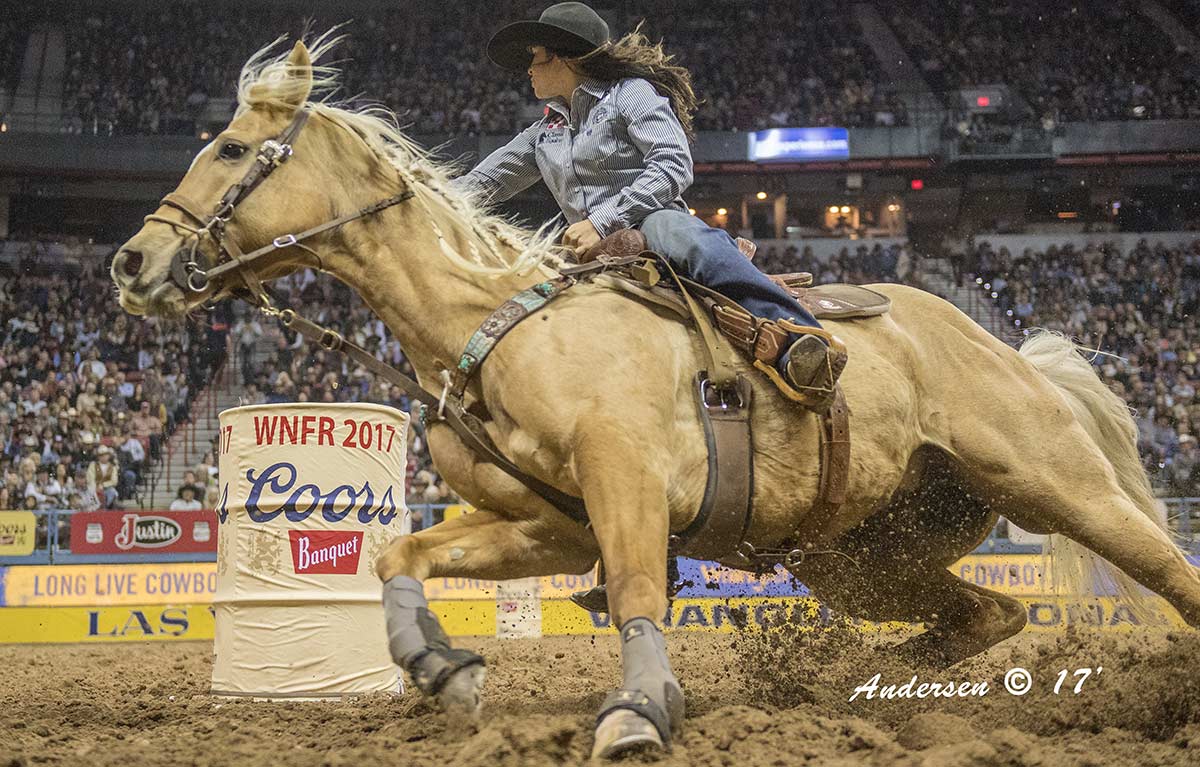
© Ric Andersen Photos – Hailey Kinsel
Last Updated on 03/11/2025 by Danny O’Donnell
CLN Community Sponsor
